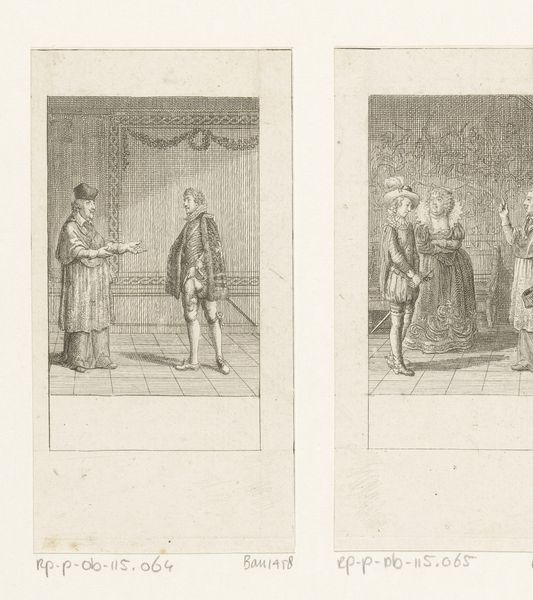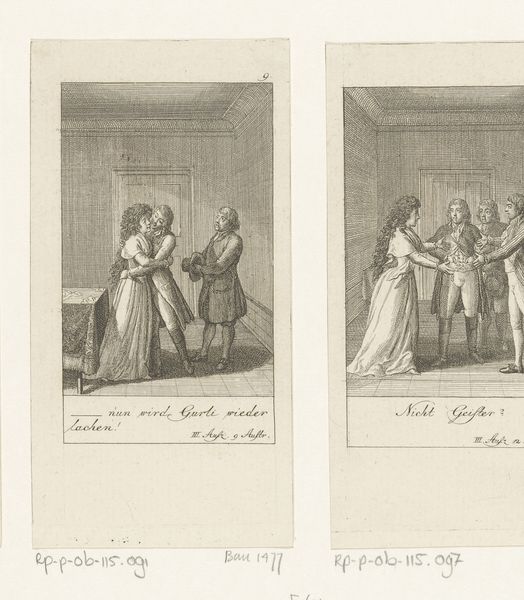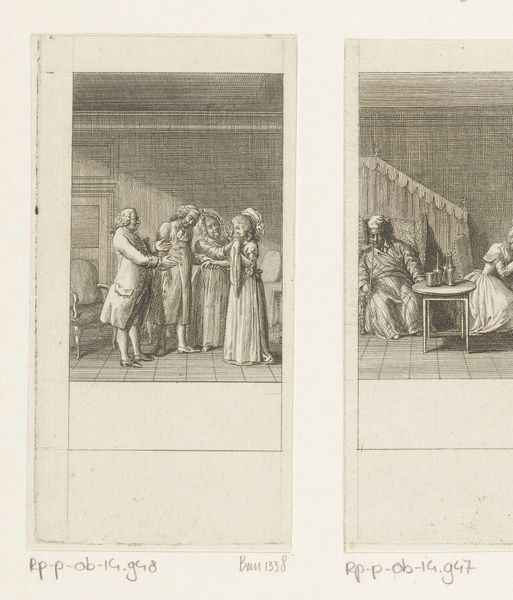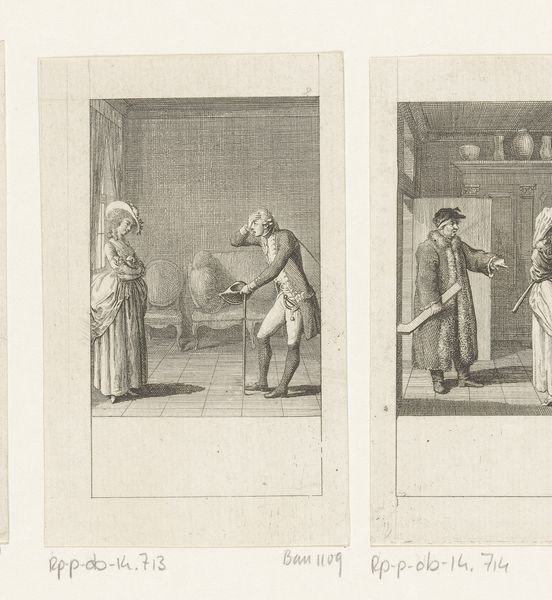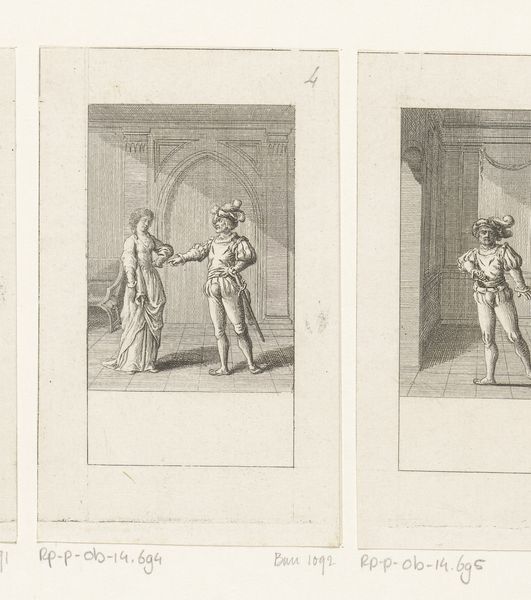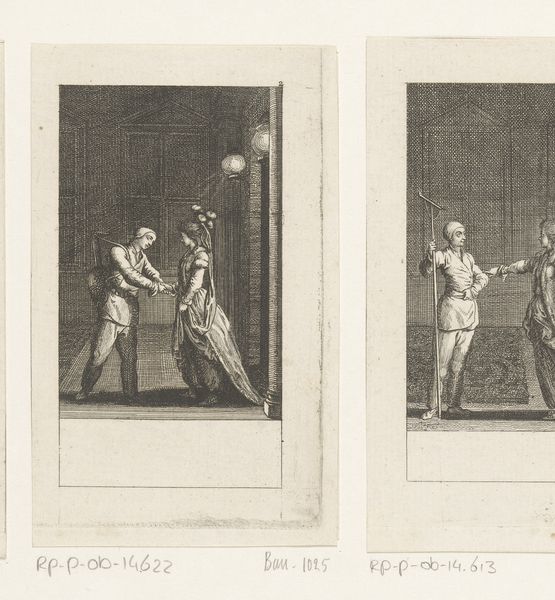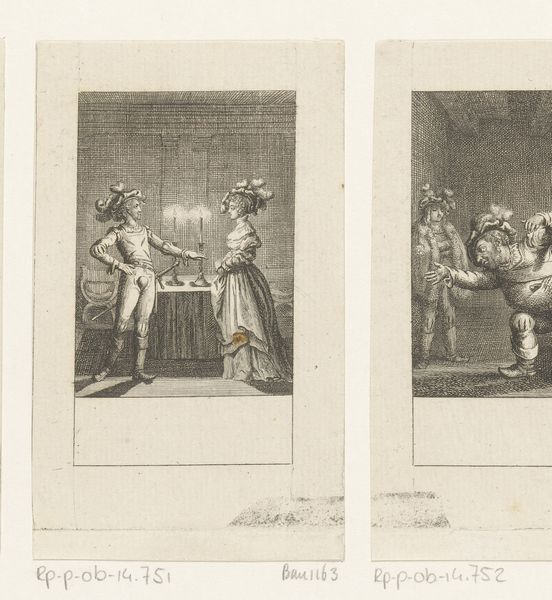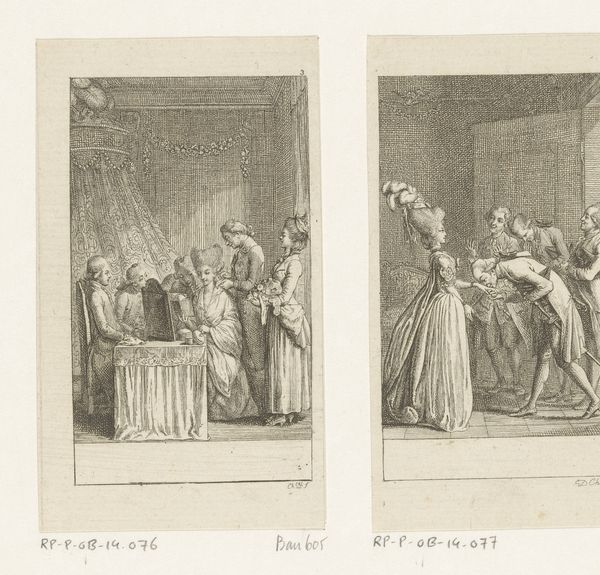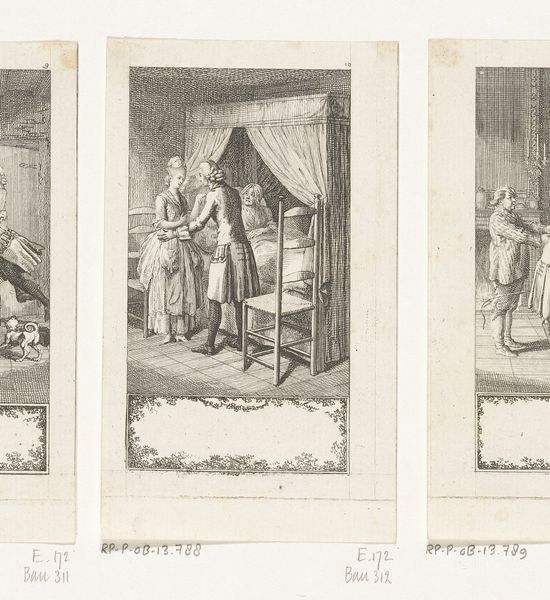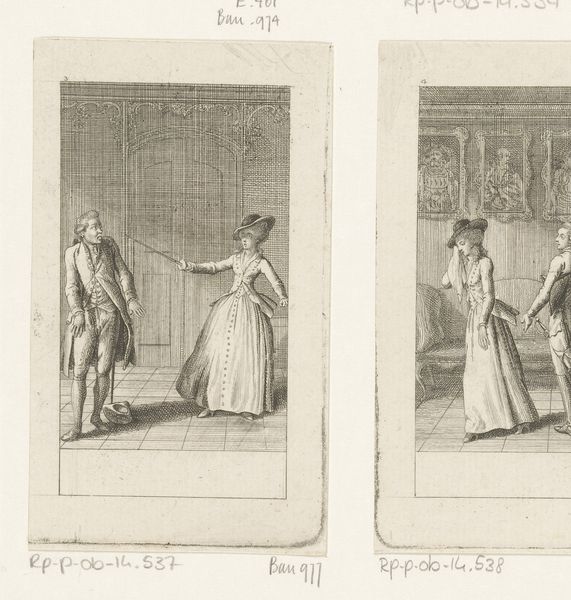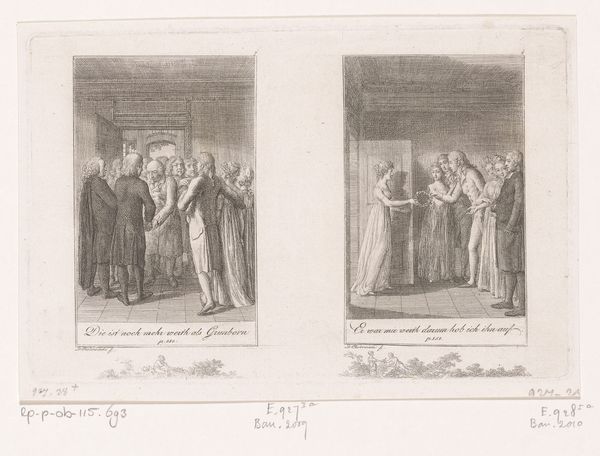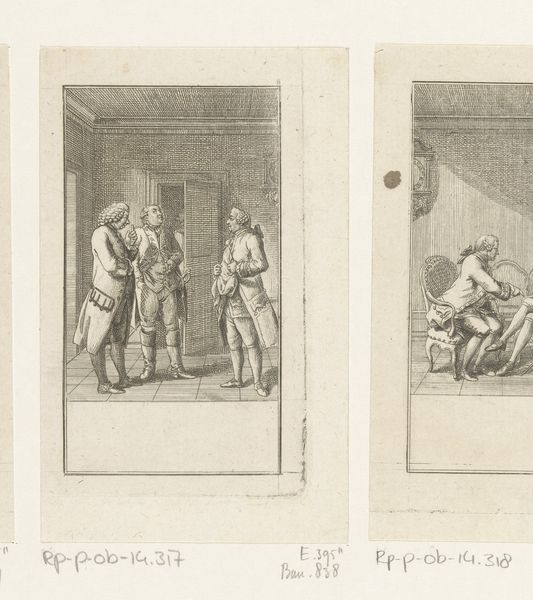
Camille wijst haar oom de deur om zo Sir Robert in de waan te laten dat ze van goede huizen komt 1787
0:00
0:00
danielnikolauschodowiecki
Rijksmuseum
Dimensions: height 116 mm, width 60 mm
Copyright: Rijks Museum: Open Domain
Curator: This engaging piece is by Daniel Nikolaus Chodowiecki, created in 1787. It's titled "Camille wijst haar oom de deur om zo Sir Robert in de waan te laten dat ze van goede huizen komt," which translates to "Camille shows her uncle the door, so that Sir Robert believes she comes from good families." Editor: Immediately, I'm struck by the sharp contrast and the almost theatrical composition within these frames. It conveys a scene ripe with drama. Curator: Indeed. Chodowiecki was a master of narrative engraving. Note the precise lines that build up form and the clear articulation of space within a domestic setting. Editor: I’m particularly drawn to how these framed vignettes present Camille navigating social constraints. The action of dismissing her uncle clearly serves a purpose, reflecting the societal pressure on women to marry well in this era. What do you make of the composition? Curator: The artist has effectively used a horizontal format divided into what reads like consecutive stages to illustrate cause and effect. Camille is at the apex. Consider how light and shadow interplay. While seemingly subtle, the balance draws attention to the staging of deception. The artist masterfully employs light and shadow to intensify the emotional atmosphere of each moment, heightening the underlying narrative tension. Editor: Exactly. It underscores the performative nature of social climbing. Do you see any element that points to a possible critique of the social values in this piece? Curator: A valid interpretation, given his wider social critiques. Consider the rigid posture of Sir Robert and Camille's uncle as embodiments of that societal stiffness. The somewhat comical exaggeration of their forms may serve to satirize these archetypes, thus questioning their worth. Editor: Fascinating. Viewing this artwork through a social and performative lens allows us to contemplate the very real pressures and constructed barriers to social mobility during that period. Curator: I'd agree. Seeing the formal arrangement drawing out this nuanced critique opens a portal to a deeper, historical reading. Editor: It's insightful how formal elements—lines, staging, balance, composition—become charged with meaning as a means to unlock historical context. Curator: Quite so, seeing the image brought to life by a broader context of socio-economic awareness.
Comments
No comments
Be the first to comment and join the conversation on the ultimate creative platform.
